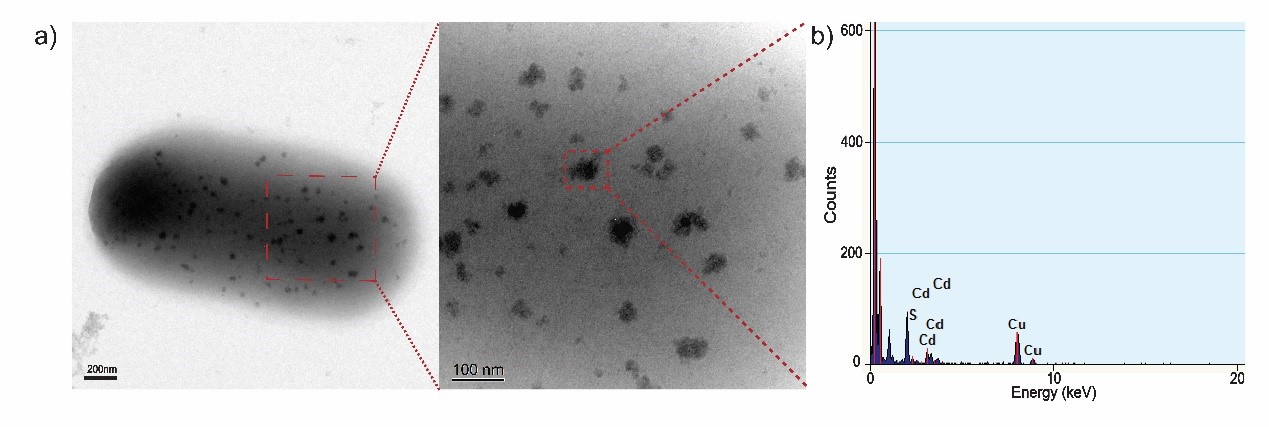

Overview
This year, we found an economic, efficient and environmentally friendly way to utilize solar energy and nitrogen in the air. Our design consists of three parts: biosynthesis of CdS semiconductor, light-driven nitrogen fixation and reaction device. All three parts have gone through in-depth examination and successfully work out under real conditions.
The following list exhibits our key achievements in this project.
•Contributed 9 basic parts, 1 composite part and 1 improved part.
•Constructed E. coli JM109 strain which express nitrogenase and OmpA-PbrR.
•Achieve the in situ synthesis of CdS semiconductor.
•Tested light-driven nitrogen fixation system based on nitrogenase and OmpA-PbrR.
•Designed a reaction device that caters for light-driven biohybrid reaction.
Biosynthesis of CdS semiconductor on cell surface
One key element of light-driven system in our design is CdS semiconductor precipitated by the OmpA-PbrR fused protein. Its optical band gap and photocatalytic capability is vital for exciting electrons, which is utilized by nitrogenase. We first determined the maximum concentration of Cd2+ appropriate for strain growth. Then we characterized these nanoparticles using TEM-EDX analysis as well as ICP-MS.

Figure 1. Cd2+ toxicity test. Cadmium ions shows no significant toxic effects on both strains.

Figure 2. Cd2+ absorption test. The introduction of OmpA-PbrR confers the host cell with Cd2+ absorption capacity.

Figure 3. (a) TEM images of biosynthesized CdS nanoparticles on the surface of a EJNC cell. (b) EDX confirmation of randomly chosen CdS nanoparticle. The absorbed Cd2+ precipitates on the outer membrane of EJNC in the form of CdS nanoparticles.

Figure 4. Characterization of biologically precipitated CdS nanoparticles on the outer membranes of E. coli cells. The UV-Vis Spectrum of E. coli/CdS hybrids in solution demonstrating a band gap at 424 nm.

Figure 5. Quantitative comparison of the photoelectrical capacity of in situ biosynthesized CdS nanoparticles. The concentrations of reduced methylviologen (MV) in various experimental groups confirm that the CdS nanoparticles precipitate on the EJNC cells adsorb a photon and transfer an electron to MV2+.
Light-driven nitrogen fixation in E. coli cells
When exposed in light, CdS semiconductor excites electrons which are then passed to nitrogenase for nitrogen fixation. We introduce nitrogenase to E. coli to enable it to reduce dinitrogen to ammonia. We conducted qRT-PCR to detect relative transcriptional level of each nif gene. We also made a plan to optimize the structure of nif gene operon after modeling.

Figure 6. Expression profiles of each structure gene in the nif cluster that overexpressed in EJNC. Relative expression compared to the housekeeping gene 16S rRNA is shown. qRT-PCR analysis demonstrates that all the component genes of the nif cluster are significantly over expressed in EJNC whereas the transcription of these genes are not detected (N.D.) in nondiazotrophic E. coli JM109.
Reaction device
We designed a light-driven biohybrid reaction device to apply our system to practical use. After a few test, we proved our device to be quite practical. (see device for more details)







